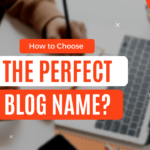Step 01 – How to Choose Your Blog Name?
Choosing the right name for your blog is one of the most important steps in starting your blogging journey.
This guide will help you understand how to choose a blog name that aligns with your goals, audience, and personal preferences.
By following these steps, you can create a name that resonates with your audience and aligns with your blogging goals.
Take your time, experiment with ideas, and pick a name that you’ll be proud to grow with.
Step 02 –How to Register Your Blog?
If you’ve ever dreamed of starting a blog, you’re in the right place.
In this guide, we’ll walk you through the entire process, and compare popular platforms like GoDaddy, Bluehost, and Hostinger.
Step 03 –How to Select A Blogging Platform?
For beginners, hosted platforms like WordPress.com, Wix, or Blogger are excellent starting points.
Take your time to explore your options and make an informed choice that sets you up for blogging success.
Step 04 -How to Customize Your Blog?

Step 05 –How to Create Essential Pages in the Blog?

Step 06 –How to Publish the First Blog Post?

Step 07 –How to make the Blog SEO-friendly?


Step 08 –How to Promote your Blog?

Step 09 –How to make money with your Blog?







